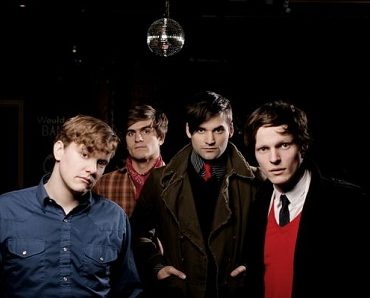The un-official Bob Dylan month culminated in the showing of ‘Bob Dylan: No Direction Home’ a documentary directed by Martin Scorsese. And boy what a climax! It started with the paperback release of his autobiography, the publication of the Bob Dylan scrap book, a photo exhibition at Proud Galleries in London and the accompanying CD set to No Direction Home. The film however eclipses all of these things and reinforced Dylan’s place in the limelight of popular culture. This is a film that anyone would enjoy, whether they are music fans or not.
The film is split into two parts and covers the 1961 to 1966 period. The film starts off in a rural backwater known as Hibbing, Minnesota, where Dylan is from. Tracing his musical and cultural roots, Martin Scorsese is able to do more in ten minutes than other directors would in an hour. One really understands the feelings of someone who lives in Nowheresville, USA, and the burning desire that Dylan had in escaping this cultural void. The film then moves to see his move to New York, examines his Woody Guthrie fascination. The film is successful in portraying the folk scene with its epicentre Greenwich Village in New York. Examining his rise to fame and his prominence as the unofficial ‘leader’ of the protest movement. It also looks at the recording of his first three LPs, Bob Dylan, Freewheelin’ Bob Dylan and The Times They Are A-Changin’.
Part Two of the documentary looks at the increasing importance of Bob Dylan as an icon, his moves away from Folk music, playing live in England in 1965 and 1966, recording Bringing It All Back Home and Highway 61 Revisited and writing the greatest rock song ever, ‘Like a Rolling Stone’. The film ends with the world famous tour of 1966 and the ‘Judas’ shout from the crowd.
The film is narrated in a mix of Bob Dylan’s musings and some of his friends (Joan Baez, Allan Ginsberg, Bobby Newirth, Suze Rotolo), colleagues and rivals who answer questions on his career and the events of his life. The film also has a range of video material which will be new and fascinating to both collectors and the uninitiated. These include the first ever known footage of Dylan in 1960 and footage from the Newport Folk Festival in 1965 where Dylan first went ‘electric’ and outtakes from D.A. Pennebaker’s films on Bob Dylan, Don’t Look Back (1965) and Eat the Document (1966).
It is the story however which is of most interest in No Direction Home. Dylan emerges as a musical sponge absorbing music from all angles, country, folk, rock ‘n’ roll. He spent his time playing in the coffee-shops of Greenwich Village and emerged to write powerful ballads on social injustice and some of the most tender love songs ever written. Part Two looks at how Dylan’s situation has changed with the crowd and media demanding more and more of him. Dylan, in return, becomes ever more grumpy with both the media and his fans. We see here why he has such a bad reputation with the press. His musical journey continues with his emersion into electricity, first on his records, then live at the Newport Folk Festival 1965 and in England in 1966. Dylan enters the film as a plumpish teenager with a Woody Guthrie fascination and emerges a shrivelled rock star with mercury eyes and wired hair. The transformation is complete. By the time the film ends Dylan is 23 years old. It is quite shocking to think that so much happened in so little time.
The footage from 1966 in England is of exceptional quality and must rank as one of the greatest live performances ever. Dylan wails as the band play their high-energy and high-volume music to a crowd of folkies. Their displeasure is shown in shouting taunts, stamping their feet and slow hand-clapping, with many even walking out. This is the first ever punk performance. It is quite hard for us to understand why the crowd reacted in the way they did but this film does the job by setting the scene of the folk circuit so early. This footage climaxes with the world famous ‘Judas’ shout. Having waited a lifetime for this footage it was truly amazing…and if I’m honest I very nearly shed a tear.
“Judas!”,
“I don’t believe you…you’re a liar!
(turns to band) “Play fucking loud!”
Just being able to see this is an amazing event in itself, but seeing this after three and a half hours of the documentary makes it even more moving.
This is a documentary which has cemented Bob Dylan’s place as cultural icon, if it were not so already. By adding the rare and unseen footage and climaxing with the best ever performance of the classic ‘Like a Rolling Stone’, he turns an interesting story into a compelling film on the life of popular music’s most fascinating character. Martin Scorsese manages to tell one of the most compelling musical stories in a clear, absorbing and moving way and in doing so has reignited public interest in the artist. It is about time that Dylan was given this treatment.
According to the news reports immediately after the first airing, talks are already underway to produce a second documentary. Dylan’s story is fascinating and I for one can’t wait to hear stories on his seclusion in Woodstock, the Rolling Thunder Revue and Dylan’s discovery of Jesus. With a life as fascinating as Dylan’s, who needs fictional films. Fingers crossed that No Direction Home Part Two gets made soon, because this is one that definitely deserves a sequel.
